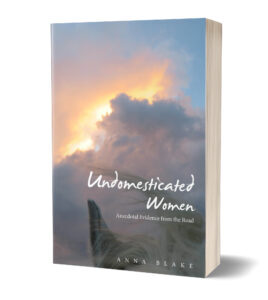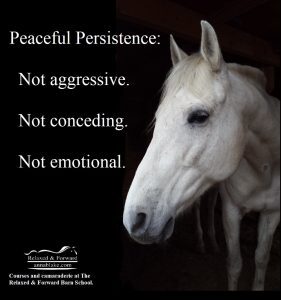Nube’s Ulcers: What We Can’t Control and What We Can.

When Nube (nu-bay) was two and first diagnosed with ulcers, it felt rare, almost exotic. People were just learning about ulcers. Phantom thoughts worried us, but we didn’t know what we didn’t know. Ulcers were unknown in the general population, or so we thought. Maybe at the race track, but never our horses. So rare you could distance yourself by thinking others were bad owners. Gastrogard wasn’t even available yet. But I’d just found out my young, unstarted horse had ulcers, so that meant I had them, too.
My research found a brief list of causes but Nube didn’t fit anywhere on the list. The scope didn’t lie, but now I had all the guilt and no way to tell what to change so they wouldn’t come back. I posted a question on social media, where all the amateur vets practice. I’m not being sarcastic. We have a lot of wisdom, even if the vets call it “anecdotal.” In some cases, we do know what we know.
I asked people how they discovered their horse had ulcers. It still amazes me, but every response people mentioned wasn’t on that list. Everyone agreed that the list failed them. I began to curate an expanded list of ulcer causes.
I made myself an expert in that way you might if you had a young dream horse. I always prided myself on being educated so I didn’t hold back. The more I learned, the more I understood how common ulcers are, practically inevitable and uncurable. Ulcers are a condition to be managed. As common as manure in the morning. We hope, because ulcers and colic are cousins.
Nube’s ulcers were treated and they returned each time. I found out that some horses in his bloodline suffered from them as chronically as he did. Some of the first ulcer management articles were written by the owner-trainer of a half-sibling longlisted for our Olympic team. The horse didn’t qualify, but like me, her owner got a first-hand education that cut deep. There is evidence ulcers may be hereditary, or maybe they’re so common, it just seems that way.
Many horses are stoic and don’t show pain. Sixty percent of horses diagnosed by scoping showed no previous symptoms at all. Horses hide their pain, we have to look to find it. Nube was sensitive and we’d shared a calming signal language all his life. He was demonstrative and honest. The perfect temperament for a performance horse. But we were understanding more about ulcers and lots of performance horses had them. Lots of pleasure horses, too.
The causes seemed to multiply. Horses kept in stalls certainly had ulcers but so did horses in big pastures. Domestic horses and feral horses. Trailering was a huge factor, but horses who stayed home were just as susceptible. Horses fed two flakes morning and night, (how most barns did it then,) but also horses on free choice grazing. Maybe the worst was knowing that some horses have ulcers as a result of chronic pain from other things we didn’t know much about, like kissing spine or stifle issues. You couldn’t cure the ulcers as long as they were tangled up with other issues.
I don’t mean to sound like a whiner here. We have learned so very much about the health of horses and veterinary science is light years ahead of where it was just a few decades ago. It’s great news. Unless it came too late for your horse.
Not only does aggressive fear-based training cause ulcers. It also shuts horses down enough that they show no symptoms. By now, calming signals were my primary language, and many times horses use that language to show pain. I had clients who hired me to fix their horses, but I only racked up more amateur vet hours diagnosing ulcers. Anxious horses were “corrected” not by training but by ulcer meds. Maybe trainers are the best at seeing ulcer symptoms because owners mistake them training issues so often. Some clients got their horses checked out and some horses struggled until they were sold or suffered colic.
I worked with rescue horses who had moved from owner to owner, showing chronic ulcer signals. It’s a death spiral hard to escape for a horse who is always living through a series of events that causes ulcers. Other times, owners unable to see emotional progress fired me for babying their horses, accusing me of spoiling them with all my listening and being affirmative. I felt the worst for those horses.
No matter how much we know or how hard we try, we can’t control the health of our horses. They are still mysteries. Diagnosis isn’t a perfect science and each week, we learn of new health concerns. Horses are powerful and dynamic, yet as fragile as cut flowers. Still, we continue to train with so much aggression that we make them sick.
What could I do? I’m a trainer, not a vet. If training could cause ulcers, was it possible that training might somehow support a horse to be more ulcer-resistant? When I worked with Nube, not only did I use my methods of Affirmative Training, I used them as if it were a matter of life or death. Because how we train is exactly that. And it’s the one thing we can control.
Nube was my personal horse, the finest horse I’d ever owned; brilliant and willing, sensitive and enthusiastic. He was all curiosity, so I presented training as a puzzle, cued with my breath, and gave him time to solve it. He’d trot at liberty to pick me up at the mounting block, as if riding was his idea. My hands didn’t pull, so his neck stayed soft. Short rides, light and happy. But his ulcer issues never settled for long.
You want to think you can make a karma deal with the fickle horse gods. You promise to work for your client’s horses with more imagination and understanding, extrapolating what you know for an individual solution, and hoping to trade that for a miracle at home.
What I know now, after years of doing my best, is Nube never got right. Maybe today we could do better for him, but that’s worthless comfort. I continue to write about Affirmative Training methods. I routinely demonstrate the effectiveness of acknowledging calming signals at clinics with strange horses. No doubt other horses benefitted from all I learned with Nube. In a darkly bittersweet cynical way, I suppose he helped my career but at a price I would never have chosen to pay.
(to be continued…)
…
 Available Now! Undomesticated Women, Anectdotal Evidence from the Road, is my new travel memoir. Ride along with us on a clinic tour through 30 states, 2 oceans, and 14k miles with me and my dog, Mister. It is an unapologetic celebration of sunsets, horses, RV parks, roadkill, diverse landscapes, and undomesticated women. Available now at Amazon, Barnes and Noble, and signed copies from me.
Available Now! Undomesticated Women, Anectdotal Evidence from the Road, is my new travel memoir. Ride along with us on a clinic tour through 30 states, 2 oceans, and 14k miles with me and my dog, Mister. It is an unapologetic celebration of sunsets, horses, RV parks, roadkill, diverse landscapes, and undomesticated women. Available now at Amazon, Barnes and Noble, and signed copies from me.
…
If you or your horse appreciate what I write, please Subscribe to this blog or join us at The Barn School. To follow Bhim’s Training Diary, click here.

Want more? Become a “Barnie.” Subscribe to our online training group with affirmative demonstration videos, audio blogs, daily quotes, free participation in “group lessons”, and live chats with Anna. Become part of the most supportive group of like-minded horsepeople anywhere.
Anna teaches ongoing courses like Calming Signals and Affirmative Training at The Barn School, along with virtual clinics and our infamous Happy Hour. Everyone’s welcome.
Visit annablake.com to find archived blogs, purchase signed books, schedule a live consultation, subscribe for email delivery of this blog, or ask a question about the art and science of working with horses.
Affirmative training is the fine art of saying yes.
The post Nube’s Ulcers: What We Can’t Control and What We Can. appeared first on Anna Blake.



